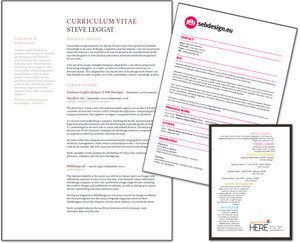The U.S. Consumer Product Safety Commission (CPSC) states that nearly one million people over age 65 are treated in hospital emergency rooms for injuries associated with products they live with and use everyday. In addition, the death rate from unintentional injuries in the home is approximately three times greater for older people than for the younger population.
Many of these accidents can be prevented with just a little forethought. Often they are caused by hazards that have been simply overlooked or unrecognized. If you are a senior citizen, or have a loved one who fits that category, take a minute to review the following safety tips.
Hallways and doorways should be well lit. Have lights that can be turned on without walking into a dark room. Install night-lights where necessary to avoid falls during the night. If that is not feasible, keep a working flashlight on the bed stand. Remember to check the batteries occasionally. Also have a table lamp and telephone within reach of your bed.
Dispense with scatter and throw rugs. They may look nice, but they can slip, or be tripped over, and cause a nasty fall. Safety should be your first consideration. Rubber grip pads underneath the rugs may work, but if there is dust on the floor, they slip as well, so don’t rely on them. You are far better off to just get rid of the rugs. Never put scatter rugs at the top of a flight of stairs, even if they have a thick rubber backing to hold them in place. Anyone, not just seniors, could easily trip on one, lose his balance and fall down the stairs. Also be wary of bath mats without a rubber backing.
Make sure you have a non-skid surface in the bathtub or shower, and grab rails installed on the walls. If standing while showering is a problem, use a sturdy bath seat. Never use a towel rack to steady yourself. They are designed to hold up towels, not people! Also be wary of bath mats without a rubber backing. Don’t use bathtub-cleaning products that leave a slippery residue. Make sure bathroom locks can be opened from both sides in case of an emergency. Try to bathe when help is available if needed.
Remove or reposition all obstacles that could interfere with walking in the home. That could include furniture that juts out too far into the room, ottomans, magazine racks, umbrella stands, coffee tables, etc. Make all traffic areas completely free of anything that could be a hazard.
Refrain from waxing floors. If using carpet, choose one with a low pile, such as Berber. Make sure carpet is secured in all doorways and on stairs, and that carpeting lies flat, with no wrinkles or loose gaps where someone could catch their foot and stumble.
If you have indoor pets, be especially careful that they are not underfoot when you are walking. Always know where they are, and if necessary, pause walking until they are well out of your pathway.
Have light switches at both the top and bottom of a flight of stairs. Never “feel” your way up or down the steps in the dark. Remember, safety first! Speaking of stairs, do not allow clutter to accumulate on them, even though it might be tempting to temporarily place the keys and mail there. That too is a safety hazard. Make sure the handrails are sturdy and well fastened.
Have smoke alarms on every floor of your house, and replace the batteries every 6 months. The easiest way to remember to do this is to make it a habit to change them when the time changes. If you live in an area where the time doesn’t change, make yourself reminders on your new calendar at the beginning of the year. Install carbon monoxide alarms near every bedroom.
Keep an updated fire extinguisher on hand, and know how to use it. Make sure it is easily accessible, not hidden behind bottles and boxes in a cupboard somewhere.
Set your microwave no higher than on a counter. Lowering a hot dish from a higher microwave can be very dangerous.
Never leave a pot or teakettle unattended on the stove. It is too easy to forget about it, and cause a fire. Unplug your coffee pot as soon as you are done using it. Never place potholders or kitchen towels on the stovetop.
Eliminate “cord clutter” from lights, televisions, etc. Secure all loose cords well out of the way of someone tripping on them. Don’t overload electrical outlets; use a power strip that can accept multiple plugs. Rather than stretching the phone cord across the room, use a cordless phone if you like to move about while you talk.
For the sake of safety, eliminate all chairs and stools with wheels from your home. If you should need to steady yourself, and you reach for a chair with wheels, it can very easily and quickly roll away, thereby causing you to fall. Chairs with wheels are much harder to steady while sitting down or standing also.
Outdoors, make sure all entryways are well lit. Stairs, decks and ramps should have sturdy, well secured railings. It is a good idea to paint steps and ramps with a special paint, available at hardware and paint stores, that creates traction. Make sure all walkways have an even surface, with no bricks, boards, or stones missing or jutting up out of place.
If you wish additional information, or would like information for an elderly loved one, The US Consumer Product Safety Commission has available the “Home Safety Checklist for Older Consumers,” a room-by-room check of the home, identifying hazards and recommending ways to avoid injury. The checklist is available in English or Spanish. Consumers may request a free copy by sending a postcard to “Checklist for Older Consumers,” CPSC, Washington, D.C. 20207.
Taking heed to these safety tips, and using some simple measures can prevent many home accidents. Don’t put off giving your home a safety check until after an accident happens.










